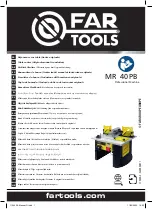
60
RSTP
RSTP is the abbreviation of Rapid Spanning Tree Protocol. If a switch has more than
one path to a destination, it will lead to message loops that can generate broadcast
storms and quickly bog down a network. The spanning tree was created to combat
the negative effects of message loops in switched networks. A spanning tree uses a
spanning tree algorithm (STA) to automatically sense whether a switch has more
than one way to communicate with a node. It will then select the best path
(primary), and block the other path(s). It will also keep track of the blocked path(s)
in case the primary path fails. Spanning Tree Protocol (STP) introduced a standard
method to accomplish this. It is specified in IEEE 802.1D-1998. Later, Rapid
Spanning Tree Protocol (RSTP) was adopted and represents the evolution of STP,
providing much faster spanning tree convergence after a topology change. This is
specified in IEEE 802.1w. In 2004, 802.1w is included into 802.1D-2004 version. This
switch supports both RSTP and STP (all switches that support RSTP are also
backward compatible with switches that support only STP).
Bridge Configuration
Priority (0-61440)
: RSTP uses bridge ID to determine the root bridge, the bridge
with the highest bridge ID becomes the root bridge. The bridge ID is composed of
bridge priority and bridge MAC address. So that the bridge with the highest
priority becomes the highest bridge ID. If all the bridge ID has the same priority,
the bridge with the lowest MAC address will then become the root bridge.
Note: The bridge priority value must be in multiples of 4096. A device with a lower
number has a higher bridge priority. Ex: 4096 is higher than 32768.
















































